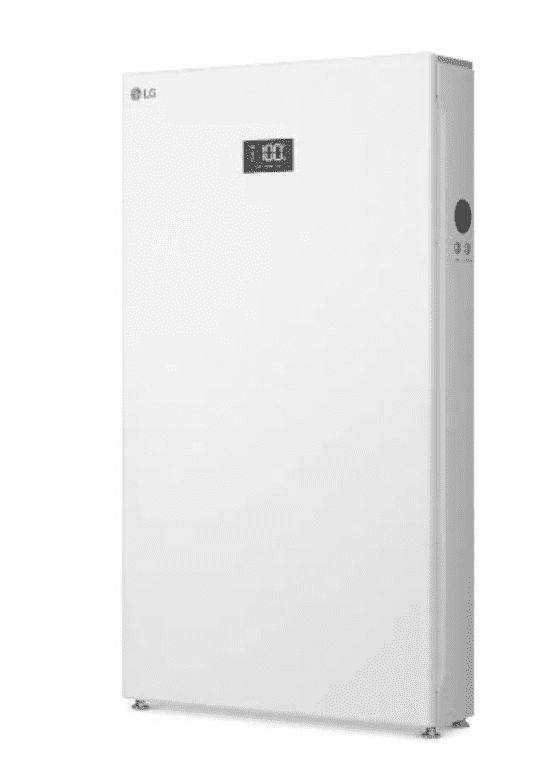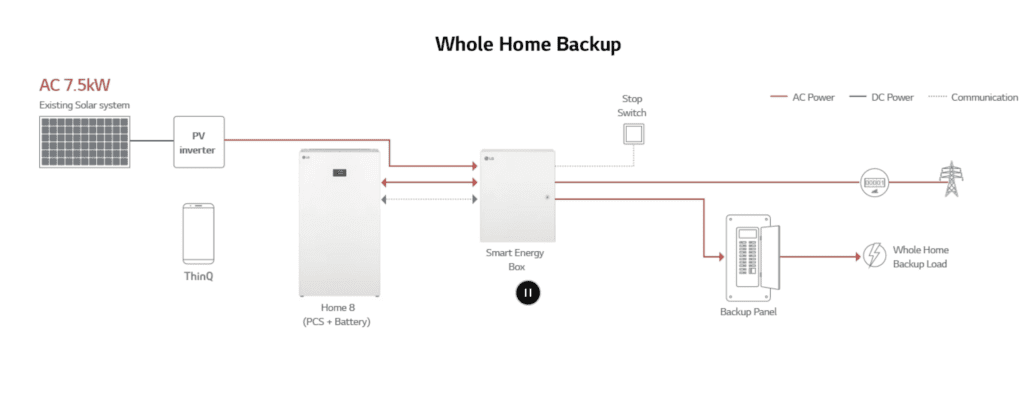The POWER Interview: Energy Storage for Commercial, Residential Electrification
Energy storage systems (ESS) are expanding far beyond the batteries being deployed at power plants, at substations, in microgrids, or at locations along the power grid to support the electricity transmission and distribution network.
Systems for commercial and industrial enterprises, and increasingly by homeowners for residential use, are helping lead the expansion of energy storage. Several companies have entered the sector to supply homeowners and businesses with systems that can provide reliable, resilient power, as part of the continuing growth of distributed, decentralized power generation.
Chris Ahn, senior vice president at LG Electronics USA, recently provided POWER with insight into his company’s ESS offerings. Ahh said LG has designed its Home 8 system from a customer perspective, taking into account how a homeowner or small business owner would use an energy storage system to support their electricity needs. LG’s system is an example of how a variety of companies are providing smaller-scale energy storage.

POWER: What is your group’s primary focus at LG?
Ahn: At LG Electronics, the Energy Storage Systems business specializes in developing, manufacturing, launching, and selling residential and commercial ESS products. We are part of the LG Electronics division that works with contractors and builders for high-performance buildings, complementing other green technologies like super-efficient HVAC (heating, ventilation, air conditioning) systems, heat-pump water heaters and so on.
POWER: There’s support for more residential and commercial electrification, but even with government support (tax credits and rebates) the cost of equipment—particularly for residential customers—remains an obstacle. What can equipment manufacturers do to spur adoption of new technologies, such as residential (and/or commercial) energy storage and/or solar-plus-storage systems?
Ahn: (There should be) a continuous process to innovate and improve ESS products and to educate the customer ahead of installation, so they understand the price/value relationship of their decision. Ongoing enhancements in safety features and production efficiencies will help make energy storage systems more attainable for a broad segment of the population and, eventually, mainstream for installers as well as businesses and homeowners.
POWER: What distinguishes a newer ESS solution from the well-known emergency generators that have been on the market for years?
Ahn: LG Electronics’ ESS, for example, is much more than an emergency generator. The LG Home 8 is an integrated system that can be incorporated into a complete smart home environment with LG home appliances, consumer electronics and HVAC systems, all while maintaining compatibility with non-LG products. Its intent is to provide the homeowner with pure independence.

Home 8 is a residential energy storage system that can be AC-coupled or connected directly to the grid. Home 8 is designed with a 7.5k inverter inside of the unit, as well as 15-kWh batteries. The Home 8 PCS + Battery has a front-of-box display that allows homeowners to easily monitor the state of their batteries, and status of the unit.
Up to four Home 8 battery modules can be stacked in one system and paired with a smart energy box. The smart energy box contains space for dual pole breakers, four spaces for the Home 8, as well as for the PV inverter. The Smart Energy Box also contains an HMI, which is one of three ways to commission and monitor the system.
POWER: Does LG Electronics ESS facilitate a dialogue between residential/commercial customers and those customers’ local utility? Is such a dialogue necessary to ensure a smooth installation experience?
Ahn: Having a dialogue with the local utility isn’t typically the case from a residential consumer standpoint, as the installer is usually the appropriate liaison. With commercial installations, it depends on what kind of customer is installing the ESS, and the size of the system. Commercial end-customers are more likely to have direct contact with the utility, but it isn’t always necessary.

POWER: What are the technologies offered by LG for residential and/or commercial power generation?
Ahn: Home 8 is an all-in-one residential energy storage system, meaning the inverter/charger and cylindrically packaged NMC batteries are both in a single housing. The Home 8 can be AC coupled with a grid-tied PV system, or can work without any PV, as a stand-alone “quiet generator” that can charge from the grid, still able to feed electrical loads.
POWER: How does LG Electronics ESS technology benefit a customer when it comes to system costs, and reliability/resiliency of a power system
Ahn: Home 8 can be configured into any of several different modes. It can be used as a backup device, providing energy only when the grid power is down. Home 8 can also be programmed to provide energy during certain “peak” times of day, when the electricity from the grid is more expensive than other times. These are the most common, and there are other modes of operation depending on climate, part of the country, utility rate programs, and so on.
POWER: Real estate of any kind is a major investment vehicle. How would installing an ESS (standalone or with solar) increase the value of residential and/or commercial property?
Ahn: An energy storage system is an asset that immediately increases the value of your property, based on the hardware alone. The functionality of the ESS—monthly savings on electricity, for example—acts like an annuity that further increases the value of the property.
POWER: How can LG ensure that a homeowner’s appliances will be compatible with an ESS system (are they equipment agnostic), and also ensure the ESS system will not require continual upgrades as appliances are replaced?
Ahn: LG Electronics’ Home 8 ESS provides the home with 240 volts that is transformed down to a usable 120 volts. Since home appliances use 120V, LG Electronic ESS basically powers any appliance. From a smart-home compatibility standpoint, LG Electronics’ ESS and LG appliances can be monitored and controlledthrough LG’s consumer ThinQ mobile app. Installers can monitor a home system remotely through the LG EnerVu app.
—Darrell Proctor is a senior associate editor for POWER (@POWERmagazine).